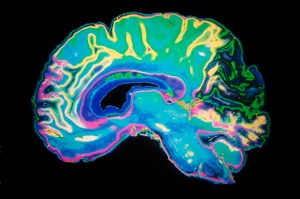 Even though you can breathe normally your brain may not be getting enough oxygen. Lack of oxygen in the brain is not something the average person can recognize. However it can cause poor brain function and increase the risk of vascular dementia, the second most common form of dementia after Alzheimer’s. The brain can be hungry for oxygen years or decades before dementia sets in. Risk factors include high or low blood pressure, heart disease, diabetes, smoking, alcoholism, and high cholesterol.
Even though you can breathe normally your brain may not be getting enough oxygen. Lack of oxygen in the brain is not something the average person can recognize. However it can cause poor brain function and increase the risk of vascular dementia, the second most common form of dementia after Alzheimer’s. The brain can be hungry for oxygen years or decades before dementia sets in. Risk factors include high or low blood pressure, heart disease, diabetes, smoking, alcoholism, and high cholesterol.
By learning to recognize symptoms you can take action to increase oxygenation of your brain, improve brain function, and reduce your risk of vascular dementia.
How to tell whether your brain can breathe
The brain contains one of the body’s most dense networks of blood vessels, which carry oxygen. It is very susceptible to any hindrances in blood flow. When the flow of oxygen-rich blood to the brain is hindered, brain cells die and the brain degenerates.
Many conditions can affect blood flow to the brain, things not normally associated with brain function. They include:
- Smoking
- Chronic inflammation (such as chronic pain, an autoimmune disease, or other inflammatory disorder)
- Low blood sugar (hypoglycemia)
- High blood sugar (insulin resistance)
- Hypothyroidism
- Diabetes
- Anemia
- Chronic stress
- Aging
Symptoms that may alert you to poor flow of blood and oxygen to the brain include cold hands and feet, becoming easily fatigued, brain fog, erectile dysfunction, and chronic toenail and fingernail fungus.
How to help your brain breathe better
Two of the most effective ways to oxygenate the brain are to lower inflammation and stabilize blood sugar. An anti-inflammatory diet is designed to lower overall inflammation in the body, which can boost blood flow to the brain. Be sure to eat a hearty breakfast with protein, eat regularly enough to avoid blood sugar lows (but avoid overeating), and avoid foods that spike your blood sugar, such as sweets or refined carbohydrates. Just focusing on an anti-inflammatory whole foods diet can go a long way to improving blood flow to the brain.
Certain herbs improve oxygenation to the brain. They include Ginkgo biloba, vinpocetine, and Butcher’s broom.
How to exercise to improve blood flow to the brain
Exercise is a great way to improve overall blood flow. High-intensity interval training in particular dilates blood vessels, lowers inflammation, and improves blood flow to the brain. This involves reaching your maximum heart rate with just a short but vigorous burst of exercise, resting, and repeating. It’s important, however, to work within your ability and avoid overtraining or you’ll negate the benefits. Even just a few minutes of high-intensity exercise can improve blood flow in the brain.
Improving blood flow to the brain may also include managing hypothyroidism, anemia, or other conditions. For more ways to improve brain oxygenation, check out my 2 week class Brain Check.




